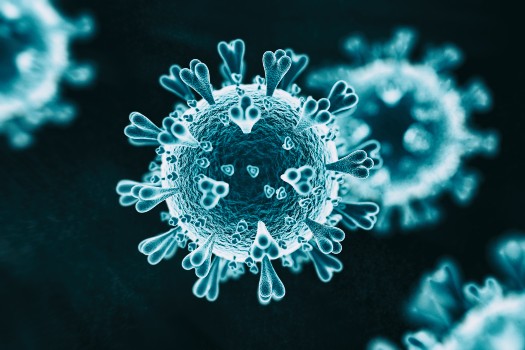Covid cases doubling every week as R rate goes above 1, Government reveals

Coronavirus rates in England are doubling every seven to eight days, as the reproduction (R) number is now above 1.
The Department of Health and Social Care said the worrying findings, published today, ‘reinforced’ the need for people to stick to new ‘rule of six’ social distancing regulations.
The Scientific Advisory Group for Emergencies (SAGE) assessed the current UK R number a 1-1.2, in a publication released today.
However, the Government’s REACT-1 major testing programme led Imperial College London researchers and statisticians from Ipsos Mori to estimate the R number for England at 1.7.
This would mean every 10 people with coronavirus goes on to infect another 17.
The DHSC said the latest report from the real-time testing programme, which saw 150,000 people tested between 22 August and 7 September, showed cases ‘are increasing steadily across the country’.
The researchers said that in England, the rate of infection is doubling every 7.7 days, with an estimate 13/100,000 people infected.
The researchers also found that Covid infections are no longer clustering in hospitals and care homes, as was the case in May and June, suggesting the virus is now spread more widely in the community.
Professor Paul Elliott, director of the programme at Imperial from the School of Public Health, said: ‘Our large and robust dataset clearly shows a concerning trend in coronavirus infections, where cases are growing quickly across England and are no longer concentrated in key workers.
‘What we are seeing is evidence of an epidemic in the community and not a result of increased testing capacity. This is a critical time and it’s vital that the public, our health system and policymakers are aware of the situation as we cannot afford complacency.’
Health and social care secretary Matt Hancock said: ‘We’ve seen all across the world how a rise in cases, initially among younger people, leads to hospitalisations and fatalities. The pandemic is not over, and everyone has a role to play to keep the virus at bay and avoid another further restrictions.
‘It’s so important that everyone abides by the law and socialise in groups up to 6, make space between you and those outside your household, get a test and self-isolate if you develop symptoms and wash your hands regularly. It is vital you engage with NHS Test and Trace service if contacted to provide details of your close contacts and self-isolate if you are asked to do so.’
There was a 43% increase in the number of positive Covid-19 cases recorded by NHS Test and Trace in the week from 27 August to 2 September.
The news comes as GPs and patients have been struggling to access Covid testing for themselves and their children in the last week, as NHS Test and Trace has failed to keep up with demand.
Latest findings from the REACT-1 study
The latest findings cover the period between 22 August and 7 September 2020, testing over 150,000 people.
- Overall prevalence of infection in the community was 0.13%, or 13 people per 10,000.
- Out of 152,909 swab results, 136 were positive.
- Prevalence doubled every 7.7 days.
- Reproduction number R was estimated to be 1.7.
- Prevalence of infection was highest in Yorkshire and the Humber and the North West at 0.17% followed by 0.16% in the North East.
- There were no significant differences between the prevalence of infection for key workers and non-key workers.
- Recent contact with a known COVID-19 case (confirmed or tested) was associated with a higher prevalence at 2.74% than for no contact with a COVID-19 case at 0.08%.
- Black, Asian, mixed and other ethnicity was associated with higher prevalence of infection at 0.20%, 0.20%, 0.16% and 0.23% respectively compared with white ethnicity at 0.08%.
- The highest rates of infection were at 0.25% in young adults aged 18 to 24 years, up from 0.08% from 24 July to 11 August. However, the prevalence of infection increased at all ages from 18 to 64 years between July and August 2020.
- 65% of participants who tested positive did not report any symptoms at the time of swabbing or in the previous 7 days.
- The prevalence was highest among those who reported classic COVID-19 symptoms (high temperature, new continuous cough, loss of smell or taste) at 0.68%.
Source: Department of Health and Social Care
Pulse voluntary donation scheme
Since the outbreak of this pandemic, Pulse has strived to support you, whether it be through our resources page, our ‘Clinical Crises’ series, holding policymakers to account with exclusives such as practices being supplied with faulty masks, or GPs being told to stop routine services in the hardest hit areas.
However, good journalism cannot be done on the cheap and, like the whole publishing industry, we have been affected by the economic slowdown. We also strongly believe the content we produce should remain free as we feel it is essential for you. Because of this, we have set up a voluntary donation scheme. There is no compulsion whatsoever to donate. But if you feel we are helping you, and you would like to support us, anything you can spare would be greatly appreciated. Read more here.











